My 9 Favorite Allergenic Food Recipes for Baby-Led Weaning
- The BIG 9 allergenic foods for babies which are the foods that account for 90% of food allergies
- Ways to introduce the allergenic foods safely to your baby for baby-led weaning
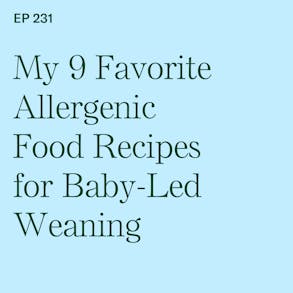
LISTEN TO THIS EPISODE
Episode Description
How can I offer my baby the BIG 9 allergenic foods? What are some of the safer ways to prepare allergenic foods while baby-led weaning? In this episode I am sharing some of my favorite allergenic food recipes that are great for introducing the big nine foods that account for about 90% of food allergies. In my mini-course that I co-teach with pediatrician Dr. Ron Sunog, you will find complete recipes mentioned today that will provide you with ways of offering your baby allergenic foods “early and often” while baby-led weaning.
Links from This Episode
- Puffworks Baby is the company that makes Baby Peanut Butter Puffs and Almond Baby Puffs, great for introducing 2 separate allergenic food categories: peanut and tree nuts. With my affiliate discount code BABYLED you can check out the Puffworks line of products so CLICK HERE TO SHOP.

- Baby-Led Weaning with Katie Ferraro program with the 100 First Foods™ Daily Meal Plan, join here: https://babyledweaning.co/program
- Baby-Led Weaning for Beginners free online workshop with 100 First Foods™ list to all attendees, register here: https://babyledweaning.co/baby-led-weaning-for-beginners
Other Episodes Related to this Topic
Soy episode:
Other allergy episodes:
- Episode 124 “Using an Egg Ladder for Babies with Egg Allergy with Carina Venter, PhD, RD”
- Episode 125 “Why are False Positive Results in Food Allergy Testing so Common? with David Stukus, MD”
- Episode 126 “EAT THE 8: How to Use Food to Prevent Food Allergy (...and skip the supplement powder stuff!)”
- Episode 129 “Exploring the Eczema & Food Allergy Risk Link with Rebecca Hartman, MD, MPH”
- Episode 131 “Dairy Free Cooking for Food Allergies Babies with Kathlena The Allergy Chef”
- Episode 180 “Food Allergy FAQ with Ruchi Gupta, MD, MPH”
- Episode 202 “Gut Check: Microbiome and Food Allergy Development with Liam O'Mahony, PhD”

Latest Episodes
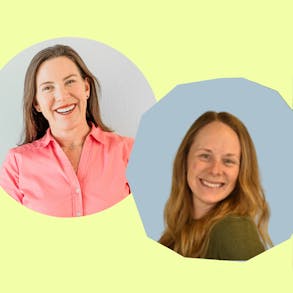
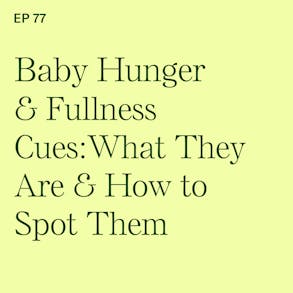
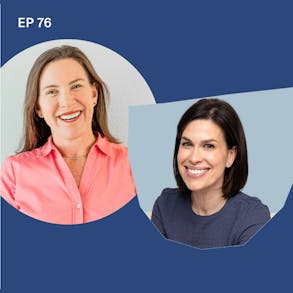
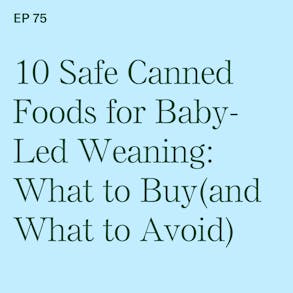
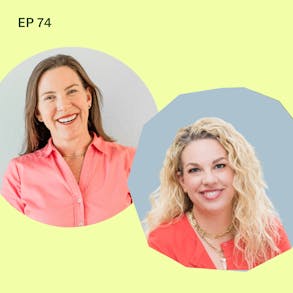
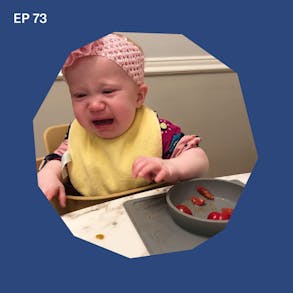
Katie Ferraro (1m 12s):
Hey, there I'm Katie Ferraro, Registered Dietitian college nutrition professor and mom of seven specializing in baby-led weaning here on the baby-led weaning made easy podcast. I help you strip out all of the noise and nonsense about feeding, leaving you with the competence and knowledge You need to give your baby a safe start to solid foods using baby-led weaning. Well, Hey guys, welcome back, today's episode is a little bit different. I'm going to be sharing my nine favorite allergenic food recipes for baby-led weaning and in outlining and preparing this episode I realized is the title might be a little bit misleading because there's actually more than nine in here, but I don't want you to feel overwhelmed.
Katie Ferraro (1m 56s):
So the outline I want to go through is looking at the big nine allergenic foods, right? Those are the foods that account for about 90% of food allergy. And we have decent data for some of them to suggest that introducing allergenic foods early and often can help lower your risk of for your baby to have food allergies down the road. Now there's also no data to support any benefit to withholding these foods. So I've done a ton of content on the podcast throughout different episodes, teaching about each of the individual allergenic foods and the history of food allergy research. And we're always having different food allergy experts on to hopefully encourage you to stay inspired to offer these foods to your babies.
Katie Ferraro (2m 41s):
But sometimes parents are like, okay, yeah, I get it. It's important, but exactly how do you do it? So I have a program that I co-teach with Dr. Ron Sunog. He is a pediatrician. We wrote a program last year called eat the eight. It's all about how to introduce the big eight allergenic foods plus sesame. So sesame got added last year, so there's technically nine, but still we cover sesame in the program as well. And this was such a fun program to put together. It's like a mini course that teaches parents about each of the allergenic foods, what the research says about the introduction. And then I share recipes for different BLW stages so that you can then actually make that food for your baby and not just make it once. Right? We want to do these foods early and often is the key.
Katie Ferraro (3m 23s):
So you guys know I'm a huge advocate of a food first approach. I'm a firm believer that your neuro-typical healthy child should be eating food based versions of these allergenic foods. You do not need to purchase gimmicky expensive supplement models to do stick packs or mix-ins or all of these supplements. That unfortunately there's a ton of money going into the marketing of them to really scare parents into thinking babies can't eat food. So Dr. Sunog is a pediatrician. Who's a big advocate for food first as well. So we teamed up to create this program last year. You can check it out if you want. The full program is@foodallergyclass.com. But what I want to do today is share some of the recipe ideas that are inside of the program. So if you want the full-blown recipes there at foodallergyclass.com, or if you're like now just modify it and figure it out myself.
Katie Ferraro (4m 10s):
I want to just give you some ideas for introducing each of the allergenic foods. Now we also have on the podcast one episode per each of the allergenic foods, and then some, so if you go to blwpodcast.com and you type in soy, for example, that's actually our most trafficked web page of any of the content or programs that I have is how to safely offer your baby soy. So type that in, and it'll take you to the show notes page for that episode with different tips. But this episode, this is episode 231. If you go to BLW podcast.com/231, I'll link you out to that food allergy course that I co-teach with Dr. Sunog and some more resources where you can figure out how to make these foods, if you're kind of gonna piece it together.
Katie Ferraro (4m 49s):
So with no further ado, I'm going to run through each of the allergenic foods. If you've taken any of my programs or follow any of my content, you know, I generally recommend starting with milk, egg, and peanut, okay. Those are the three most common pediatric food allergies, but you don't have to start with them. I'll routinely pick something random like shellfish or soy or sesame as the first allergen to start with for baby, because it doesn't really matter. The key is that we want to start at around six months of age when your baby is safe to start solid foods. The exception here is if your baby is at high risk for peanut allergy. So the new criteria for quantifying a baby qualifying, I guess, as being at high risk is for peanut allergy. If your baby already has an egg allergy, or if your baby has severe eczema, not the run of the mill eczema, like all babies have.
Katie Ferraro (5m 35s):
So again, egg allergy and or severe eczema that puts your baby in a high risk category for peanut allergy and the guidelines support earlier introduction. So you would want to talk to your doctor about a safe way to do that. If you do need to introduce peanut prior to six months of age, but for all of the other allergens, I just want you guys to know that there's no benefit. There's no research or data that supports the idea that earlier introduction is protective because sometimes parents are like, well, I want to start at four or five months of age. That's why I'm buying the supplement program, but there's no benefit to show that it's more beneficial if you do it at four or five months of age versus six months. Okay. So when at six months of age is when your baby is safe to start eating something besides breast milk or formula. So that all of these recipes that I'll mention today are for six month old babies who are also demonstrating the other reliable signs of readiness to eat.
Katie Ferraro (6m 20s):
So let's start with cow's milk. Okay. One of my favorite ways to do cows milk for babies is to offer whole milk yogurt, right? So full fat, whole milk yogurt is a great option. Okay. That works great off of a preloaded spoon, but I also have done this a number of times. And I've shared with some of you guys, if you follow me on Instagram, show you how to make homemade cottage cheese, okay? Because the cottage cheese that we buy in the grocery store has way too much sodium for babies. So my general rule of thumb, which I've always espoused since I started specializing in baby-led weaning, is that I feel comfortable with a hundred milligrams of sodium or less, right? If a packaged food has 100 milligrams sodium or less, that's something I'm comfortable offering my baby because of course the majority of the foods that I offer don't come from a package.
Katie Ferraro (7m 4s):
And on the other side, your baby's not going to eat that full posted adult portion size. So if you're looking at cottage Jesus in the store, you're never going to find one with less than a hundred milligrams of sodium. So you can actually make your own cottage cheese and just remove the salt and then offer that from a pre loaded spoon because of the chunky, the kind of like that texture, you really can't get anywhere else. Like personally, why I don't love gods Jesus, the texture, but babies will pick that up with their hands. And when you make your own homemade cottage cheese, you can actually just roll into little logs about the size of your adult pinky finger. Your baby can pick it up and eat that. Okay. Also, I'm kind of a little bit more of an advanced recipe. I generally do for like eight months old babies or beyond when you move into phase two of baby-led weaning, which is the second eight weeks.
Katie Ferraro (7m 46s):
And I teach that in my program. It's kind of when we start moving into the combination foods, I do an herbs ricotta dip. Okay. And ricotta is ricotta is one of the lower sodium cheeses. Okay. You'll note that soft cheeses are lower in salt than hard cheeses, but there's lots of different ways to offer babies, cows milk protein. But of course we don't substitute fluid cow's milk in place of infant milk until after your baby is age one. So there's some suggestions on cows milk. Let's talk next about eggs. I love to introduce exit six months of age. I generally will do fried egg strips, break the yolk into the white Friday egg. Cut it into about the size of your adult pinky finger. That's pretty basic. Most of you guys can make eggs, but inside of the Eat The Eight program with Dr.
Katie Ferraro (8m 29s):
Sunog, we also wrote a zucchini egg cup recipe, and I love breakfast recipes that incorporate vegetables because sometimes it's kind of hard to feed. You know, anyone can feed fruit at breakfast, that's easy, but the vegetables, I love these zucchini egg cups. And again, that's a combination food. So I generally don't do it until after baby has been eating for about eight weeks, which is for most babies around eight months of age or beyond. Then I also, from time to time, we'll make hash brown quiche cups. I love bake ahead. Like things you can do ahead of time in case you don't have time or don't want to cook in the morning. And I love frozen hash browns. Okay. There's a couple of brands out there that have no added salt. So just read your labels, but does hash brown quiche cups are a great thing to cook, just in a muffin tin.
Katie Ferraro (9m 11s):
Sometimes I do mini mini muffins. Those ones do better in like the full-blown muffin tin, or if you lose use like mini loaf pans, that works great. And then I cut them into strips again, as a combination food. I wouldn't feed that to baby until after eight months of age, I, when it comes to peanuts, I share tons of content about thinned out peanut butter, right? Because chunky, when we never feed chunky peanut butter to babies, because the intact nuts or thick globs of nut butter can be a choking hazard, but you can do unsweetened unsalted, smooth peanut butter and smooth it out. Okay. Our thin it out, rather with applesauce or breast milk or formula, if baby's already had cows milk protein, I'll do that with yogurt, even do it with regular milk, if you want to just so long, and it slides easily off the spoon, which means it will be easier for the baby to clear from the roof of their mouth and not pose a choking risk.
Katie Ferraro (9m 58s):
So fend out peanut butter is great inside of the Eat The Eight course, I also have a peanut butter oatmeal recipes. So I love to incorporate peanut butter into oatmeal. But again, you want to do it in ratios. That makes it thin enough. So baby, doesn't choke on it. And also for those of you that don't even like cooking. One of my biggest suggestions for early peanut introduction is I just do baby peanut butter puffs. So I don't generally advocate for the use of packaged snack foods for babies because they don't need it. And they're expensive. However, for peanuts, I personally don't love peanut butter. I don't like to touch it and I think it smells bad. So I do the peanut butter puff from the company called puffworks they're at puffwork.com.
Katie Ferraro (10m 39s):
They make a baby peanut butter puffs and a baby almond puff. That's for the introduction of tree nut, Iam an affiliate for puff works. So my affiliate discount code is BABYLED. If you go to puffworks.com and enter BABYLED, you can get a discount and get, I think, a case of peanut baby and a case of almond baby is great to have on hand do the peanut one first though, cause their almond product does contain peanut. So we want to do peanut first, a number of times without reaction and then do tree nut, which is their almond puff. After again, the company is called puffworks and the website is puffworks.com. And my affiliate discount code is BABYLED. All right, that's the first three, right? Milk and egg and peanut. You guys can do that. I do one allergenic foods a week starting in the first week of baby led weaning in the second phase of the Eat The Eight course, we teach you how Dr.
Katie Ferraro (11m 25s):
Sunog and I teach together about wheat fish and train. Now we're getting a little bit trickier. Most of you guys can do wheat foods. I love to do pasta plain cooked pasta as a way to introduce the baby to wheat. I cook it al dente, okay, because we want to be nice and soft so that your baby can eat it. Pasta by itself doesn't have any added salt. That's when you add all the other sauces, et cetera, the salt kind of kicks up. I also have a really, really just love this recipe, a double duty pancake and waffle batter recipe. So I've been making this for years because commercial pancake mix is really high in salt. It's also really expensive. So you can make your own at home with wheat flour and whole wheat flour and a couple of other ingredients. And then it's a dry mix that you keep on hand and you mix a cup of the dry mix with a cup of buttermilk and one egg.
Katie Ferraro (12m 10s):
So inside of the Eat The Eight course, Dr. Sunog and I have the allergens spaced in a way so that each recipe builds on the previous week. So that, for example, when you're making double duty, the pancake and waffle batter mix, yes, it has milk and yes, it has egg, but your baby's already had those allergenic foods, a number of times without reaction. So it's safe to use that as a way to introduce wheat. If you are doing the pancakes or the waffles, what have you? I also do panko avocado fries. This is more of an advanced food combination food that we do in stage two of baby led weaning. But I love panko that's Japanese style, bread crumbs. Okay. Because they don't have any added salt. They have just a little bit of salt. You got to read your labels. I've seen panko brands recently that have tons of salt, traditional breadcrumbs, just like traditional bread, tons of salt, but pinko is lower in sodium.
Katie Ferraro (12m 55s):
So that's wheat do that in module three of the eat, the acorns. We also do fish. So I love to do baked fish. I have tons of previous podcast episodes about white meats and dark meats. If you go to the white meat episode, you can learn more about fish, but baked fish works wonderful for six months of age. And then I have an eight month old recipe, baby friendly cod cakes with an aioli dipping sauce. So you can really use any white fish and you can use a frozen one. It doesn't have to be expensive. And it's kind of like a shrimp cake that you would make except shrimp isn't type of shellfish, right? So that's a separate allergenic food category from fish. So I'll do with the fish cakes and then I have this lovely aioli dipping sauce that also incorporates egg. And so in that way, you're, re-introducing that allergenic food while you're introducing the new food, which is fish and for older babies, I also love to do low sodium tuna noodle casserole.
Katie Ferraro (13m 45s):
It's much a little bit more of a tricky food because of the different textures but you, instead of like, my mom always made tuna noodle casserole with condensed canned soup, which is fine if you're an older kid, but we really don't want babies to become accustomed, to having high salt foods like that. And while there's lots of great canned foods that work for baby led weaning, we do stay away from the canned soups because they are so high in sodium, but it's super easy to make a low sodium tuna noodle casserole, which again, I'll do usually like 10 month old babies and beyond that's a little bit trickier. Tree nut is the one I do next. Okay. So in module three of our Eat The Eight course Dr. Sunog and I take you through wheat fish and tree nut, tree nut, if you want to, you know, almond butter, I think is a great place to start. I do the same method as I do for thinned out peanut butter.
Katie Ferraro (14m 26s):
I do that for thinned out almond butter. I also love to make a walnut basil baby pesto love pesto's has a low sodium sauce or dipper or topper and incorporating walnuts is a different type of tree nut. So sometimes parents will say, do I need to go through every single tree nut and have like a very, I mean, I've seen parents make like checklists. And actually in one of my programs, we do have a tree nut checklist because the typ parents asked for it. But do you have to like do Walnut three time and do cashew three time, but then before that makes sure you do pistachio. No, not necessarily. You want to introduce your baby to a variety of tree nuts if your family eats those nuts. So I love the walnut baby basil baby pesto. I'm I also one of my most popular recipes across all of my programs is an almond flour mini muffin.
Katie Ferraro (15m 7s):
Okay. Now almond flour is a little bit pricey, but it's a great way to incorporate, I think, a high protein flour, like for bigger kids. I always make these almond flour mini muffins because the almond protein, the almond flour rather has a higher level of protein than traditional wheat flour. And actually add a little more fiber as well. Fiber and protein is what helps you stay fuller for longer. So we're not interested in like filling your babies up, but I want to use the almond flour as a way to introduce the tree nut almond as one of many ways that you could do it, but it's not like a muffin like that. You are I would like because there's no salt, no sugar. So I don't think it tastes that great, but babies love the almond flour mini muffins. And then in the last portion of my Eat The Eight program that Dr Sunog and I teach, we take you through how to do soy shellfish and Sesame.
Katie Ferraro (15m 51s):
K soy super easy at generally start with tofu. Okay. Have a whole podcast episode, as I mentioned is our most trafficked page, which just blows my mind because it's so easy to take tofu and cut it into strips about the size of your adult pinky finger and offered it to your baby. But I think a lot of families are scared of tofu. So I share inside of this program, some more tips on how to make tofu safe for babies. I also do a blueberry tofu smoothie. Okay. A great way to practice that open cup drinking. I'll do that generally for about eight month old babies and beyond. And then I have a tofu lasagna that I'll do for 10 month olds and beyond, which is a little bit more complex, but it's a great way to layer in some of those previous allergenic foods and incorporate tofu, which I love because it's a very affordable source of protein as well.
Katie Ferraro (16m 35s):
Okay, on to shellfish. Shellfish, I think if I had to do like an informal, like guessing of my audience, it's probably the toughest allergenic food to introduce because you're probably not that comfortable with, or maybe like, it depends what your food culture is, but like preparing a lot of shellfish shoots. I don't know about you, but I don't make a ton of shrimp. Well, my kids actually really like shrimp. I should probably buy it more, but I'm more of a tofu person cause it's, but back to the shellfish, I do a shellfish salads bread, which sounds fancier than it is, but it's great for babies who are six months of age, I might also do a Thai style shrimp cake. So kind of like a fish cake, but you can add more seasoning, et cetera, a little bit of a different flavor profile. And as a combination food that would be for eight month olds and above.
Katie Ferraro (17m 18s):
And then for our 10 month old babies, I love our linguine with clam sauce recipe, super fun way to incorporate pasta, which everyone loves, but without your traditional red sauce and getting those clams in cause clams can be a little tricky. And Dr. Sunog and I spent a lot of time on the shellfish module inside of Eat The Eight, because we know it's an area that parents are sometimes like a little apprehensive about. And then the last allergenic food that got added to what was previously the big eight, which is now the big nine is Sesame. My number one favorite way to do sesame is to do thinned out tahini. So tahini is just sesame paste and I show you how to make it thin enough that you can offer it to your baby and then how to select the tahini. Cause there's some nuances there for six to eight month old babies, I'll also do homemade hummus.
Katie Ferraro (17m 59s):
So if a couple of different variation recipes, the hummus that you would buy at the store is too high in sodium to offer to babies. But it's so easy to make at home and then take a portion out for your baby and then just add salt to the rest of what's left for you and the other family members. And then I think probably my favorite recipe in our entire program is the black sesame soup. So black sesame powder is used in Asian Middle Eastern East Asian cuisines. You can find black sesame powder at Asian supermarkets. You can also make it yourself. So to show you how to do that, but the black sesame soup, I kind of modified this from an existing recipe. Actually it's Katelyn who works for us is a dietitian. Her grandma had a recipe that she shared with us that we then kind of like reverse engineered to make it work for baby-led weaning.
Katie Ferraro (18m 41s):
So I forgot to ask her grandma's opinion. If it's still authentic, after we stripped out some of them, I salt high sugar ingredients, but I've made it for babies and they freaking love it. So black sesame soup a little bit while that's the ones that I'm just like, some families are like, I'm not comfortable with this. Like, Hey, that's fine. There are. So what's that 27 recipes inside of this program with all the ratios, et cetera of how to make it. If you guys are interested, that's at foodallergyclass.com with a lot of additional training in there for introducing the allergenic foods. So I hope you have some ideas now of, you know, the types of foods your babies can eat at 6, 8, 10 months of age to be continually exposing them to those allergenic foods. Because don't forget the only risk factor that you have control over for lowering your baby's risk of food allergy is offering them the allergenic foods early and often, and you get tired of hearing it.
Katie Ferraro (19m 31s):
I get tired of talking about it, which is why Dr. Sunog and I made this comprehensive allergenic foods introduction course for you guys called eat the eight it's at food allergy class.com. Check it out and let me know if you like the recipes and how it's going, introducing your baby to all of these allergenic foods. I don't want to overwhelm you, but if you got to make food for the baby, you might as well have some fun doing it. And we had a lot of fun creating this course for you guys to check it out, foodallergyclass.com, and I will see you next time. Bye now.
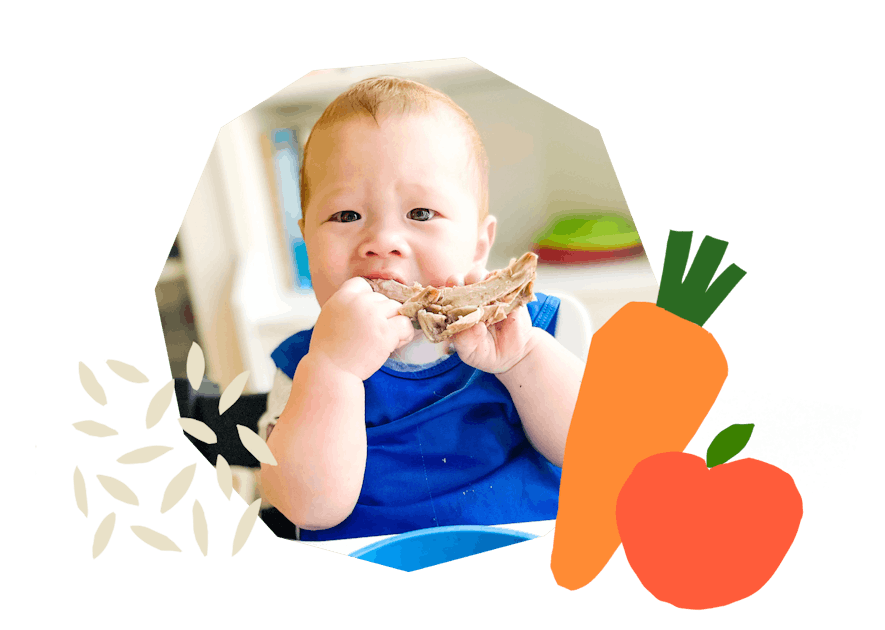
The Program Baby-Led Weaning with Katie Ferraro
A step-by-step digital program for starting solid foods safely and navigating the original 100 FIRST FOODS™ meal plan with baby-led weaning.
 EXPERT-LED, PROVEN APPROACH TO EATING REAL FOOD
EXPERT-LED, PROVEN APPROACH TO EATING REAL FOOD CONCISE VIDEO TRAININGS TO MASTER BABY-LED WEANING
CONCISE VIDEO TRAININGS TO MASTER BABY-LED WEANING 100 FIRST FOODS DAILY MEAL PLAN WITH FOOD PREP VIDEOS
100 FIRST FOODS DAILY MEAL PLAN WITH FOOD PREP VIDEOS
Baby-Led Weaning for Beginners Free Workshop
Is your baby ready to start solid foods, but you’re not sure where to start? Get ready to give your baby a solid foundation to a lifetime of loving real food…even if you’re feeling overwhelmed or confused about this next stage of infant feeding.
Get baby-led weaning recipes and tips delivered to your email inbox.

